With $904.9 million per year of compensation paid for work-related mental health conditions, it’s no surprise that one of the hottest leadership topics right now is psychological health and safety. Or more specifically, the management and reporting of psychosocial risks, as part of a broader employer responsibility for psychological health and safety.
It’s taken nearly two years since the release of ISO 45003 in June 2021 for the psychosocial risk conversation to gain cross-department momentum, but fuelled by the gradual release of state-based codes of practice, it’s heartening to see that it’s finally at the top of agendas beyond only WHS representatives and People and Culture teams.
In recognition of World Day for Safety and Health at Work last week, we thought it timely to shine a spotlight on psychosocial risk – recapping some of the latest rules, news, and discussions in this space.
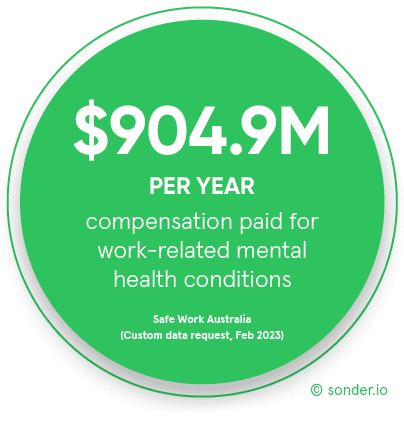
[Legal updates] Jurisdictional duty in Australia
In May 2021, NSW implemented the Code of Practice: Managing psychosocial hazards at work. By doing so, they became the first Australia/New Zealand jurisdiction to implement an approved code of practice addressing psychosocial hazards.
Western Australia (in February 2022), Tasmania (in January 2023) and Queensland (from 1 April 2023) have also introduced similar codes of practice in their respective jurisdictions.
The Northern Territory is currently working on their Code of Practice, which is expected to be published in or around July 2023.
New South Wales became the first jurisdiction to adopt the amendments to the Model WHS Regulations. From 1 October 2022, persons conducting a business or undertaking (PCBUs) in NSW must manage psychosocial risks and implement control measures to eliminate psychosocial risks so far as is reasonably practicable, and if it is not reasonably practicable to eliminate psychosocial risks, to minimise the risks so far as is reasonably practicable.
From 12 December 2022, PCBUs in Tasmania must implement control measures to manage psychosocial risks.
From 23 December 2022, PCBUs in Western Australia must implement control measures to manage psychosocial risks.
Queensland and the Commonwealth passed amendments to their Work Health and Safety Regulations requiring PCBUs to implement control measures to manage psychosocial risks from 1 April 2023.
Similarly, the Northern Territory passed an amendment that commences on 1 July 2023.
In some jurisdictions, these duties vary slightly, and each workplace will have a unique way of dealing with psychosocial hazards that is particular to the context and content of the work.
For jurisdictions without a code of practice for managing psychosocial hazards in the workplace, ISO 45003 provides a useful guide to assist organisations to comply with their duties under WHS laws.
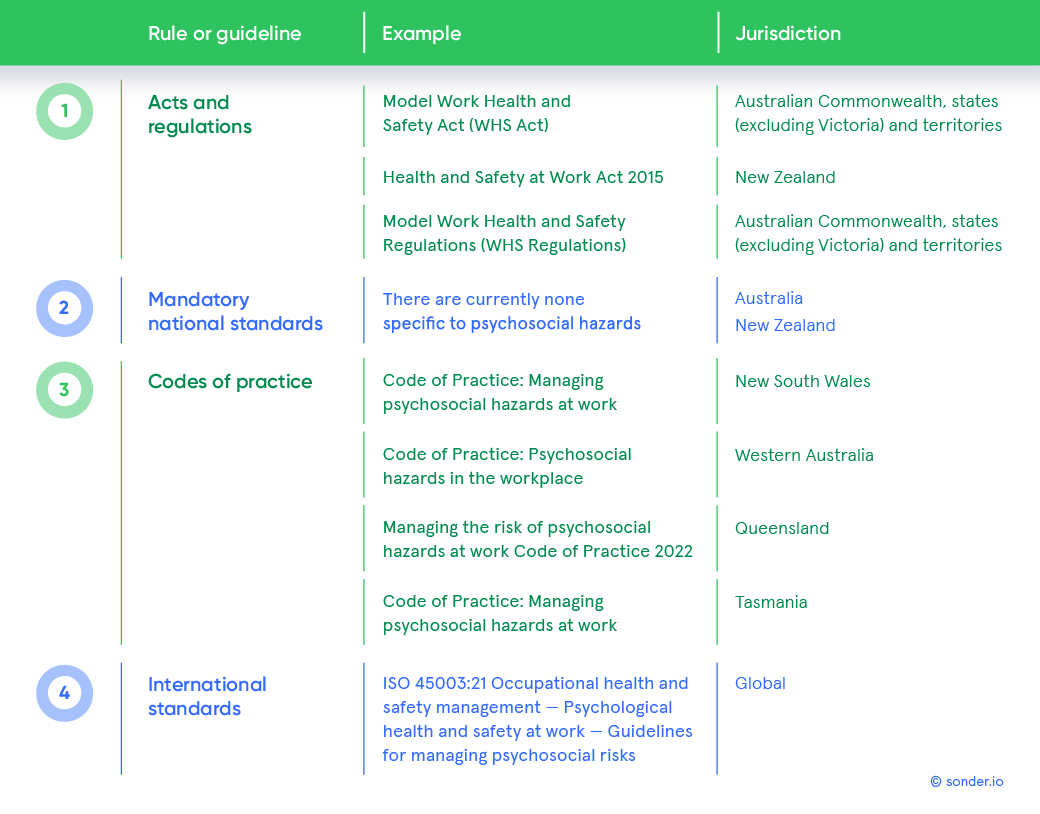
[Resource update] A simple guide to ISO 45003
If you’d like an explainer guide to ISO 45003, which includes an updated list of rules and guidelines in Australia and New Zealand, plus handy checklists of positive outcomes that you can use for your business case, we invite you to download it here.
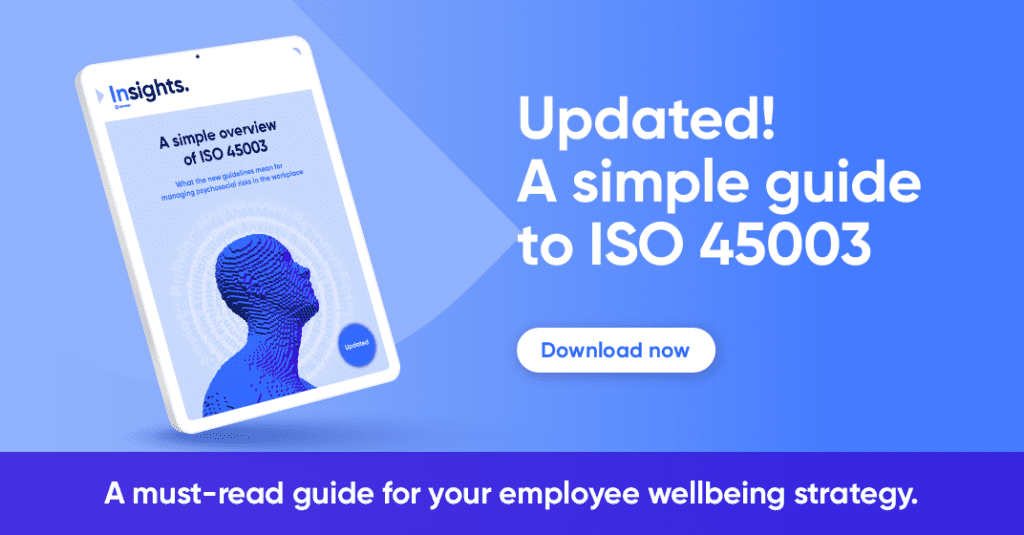
[New guidance] Comcare’s Work Demands
On 20 March 2023, Comcare released Work Demands – a suite of guidance on identifying and managing the risks of work demands – for employers, managers, and workers.
“Employers, managers, and workers all have duties under the Work Health and Safety Act to identify, assess and manage psychosocial hazards which can affect the health of workers and workplace conditions.
This guidance has been developed in consultation with representatives covered by the Commonwealth WHS Act.”
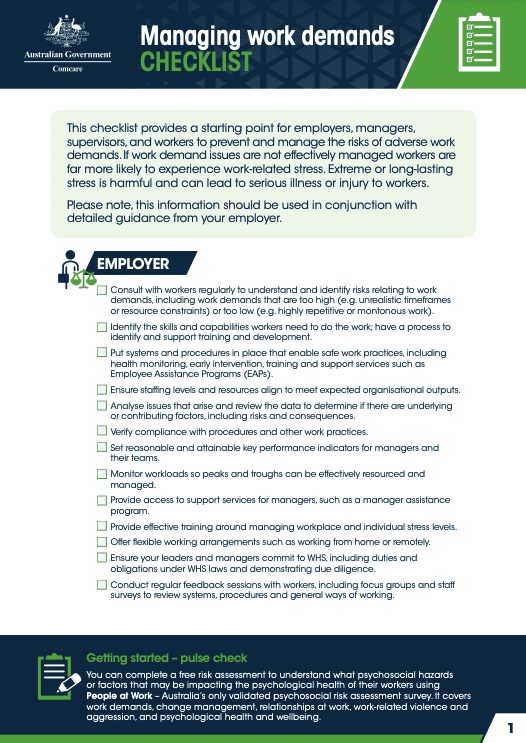
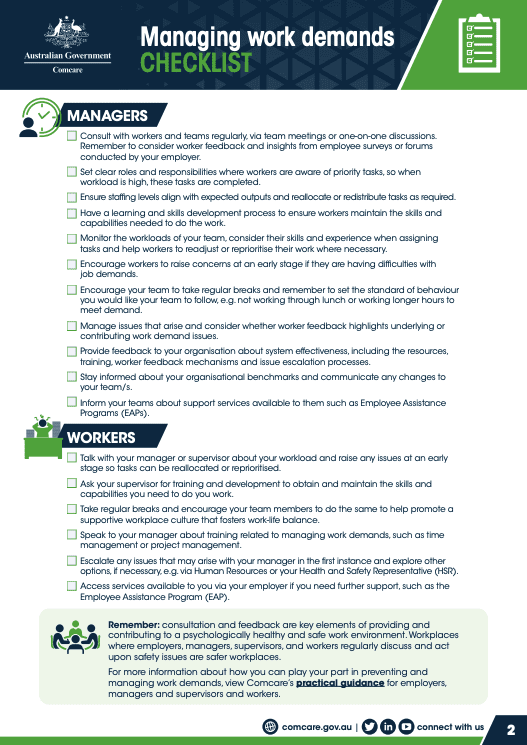
[New report] Canadian Standards Association
As Australia continues to evolve in this space, it can be useful to keep abreast of updates offshore such as the excellent March 2023 report published by the Canadian Standards Association.
Employees’ perceived psychological health and safety experience during COVID-19 through an inclusion lens – authored by Lee-Baggley, D. and Howatt, B. on behalf of the association – shares some interesting data tables, together with this high-level summary:
- Psychological health and safety can be achieved when employees and employers work collaboratively.
- Employees can act to promote their mental health, and employers can mitigate the impact of negative (e.g. draining) psychosocial factors that pose risks to mental health.
- It is important to consider both employee- and system-level supports.
- Employers can broaden how they address psychological health and safety in the workplace and should not solely depend on employees to access employee-level supports to improve well-being.
- System-level supports can improve the experience for all employees by preventing challenges and providing a supportive environment for those experiencing problems.
- Inclusivity impacts many workplace factors, from disability leaves to barriers in accessing support.
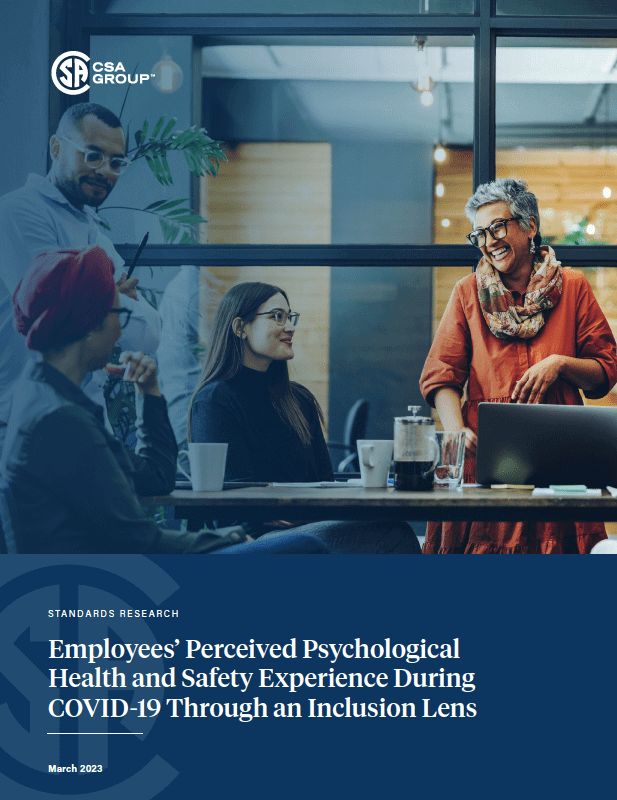
What is the difference between employee-level supports and system-level supports?
As defined in the report, employee-level supports are “typically designed for each employee to access at their discretion”. Examples include employee assistance programs (EAPs), alternative wellbeing support programs, and mindfulness apps.
System-level supports are “designed to foster work environments that reduce risk factors and promote preventative factors”. Examples include the management of work hours, reducing workloads, and modifying working conditions.
Key performance behaviours (KPBs)
The report stressed the importance of employee engagement and suggested employers introduce key performance behaviours (KPBs) to parallel efforts in OHS where specific and clear KPBs (e.g. daily hardhat use) are more common.
In the report, three suggested areas for KPBs came from Dr Bill Howatt’s research:
- Leadership KPBs
“Leaders follow up and make their one-on-one employee meetings a priority. The goal is to learn what the employee is doing, how they are doing, and what can be done to help them complete their work. - Employee KPBs
“Employees are encouraged to schedule 30 minutes a week to meet in person or virtually with a workplace friend to share their successes, challenges, and goals. Leaders are encouraged to support their direct reports to find a workplace friend and ensure that every worker has at least one psychologically safe pillar.” - Senior leadership KPBs
“Senior leadership takes accountability to support the employee experience using weekly pulse check data. These data provide confidential feedback on what is charging and draining employees’ batteries. The chargers and drains are identified in a listening tour with the employees. This exercise challenges leadership to evaluate and create conversations and actions that reduce mental drains and increase mental chargers (i.e., reduce psychosocial stressors, implement protective factors, or make decisions that empower employees).”
[LinkedIn discussion] Risk assessment frameworks
Last week, Jamie Mallinder (Principal Consultant, Workforce Strategies – Pacific, Marsh) started a lively discussion on LinkedIn about risk assessment frameworks for psychosocial hazards.
He argued that traditional frameworks “tend to overlook the cumulative effects of ongoing exposure to psychosocial hazards”, which “can significantly impact employees’ mental health and wellbeing over time”.
To address those limitations, he proposed adapting risk assessment frameworks to incorporate the frequency and duration of exposure to psychosocial hazards and included this 5×5 matrix:
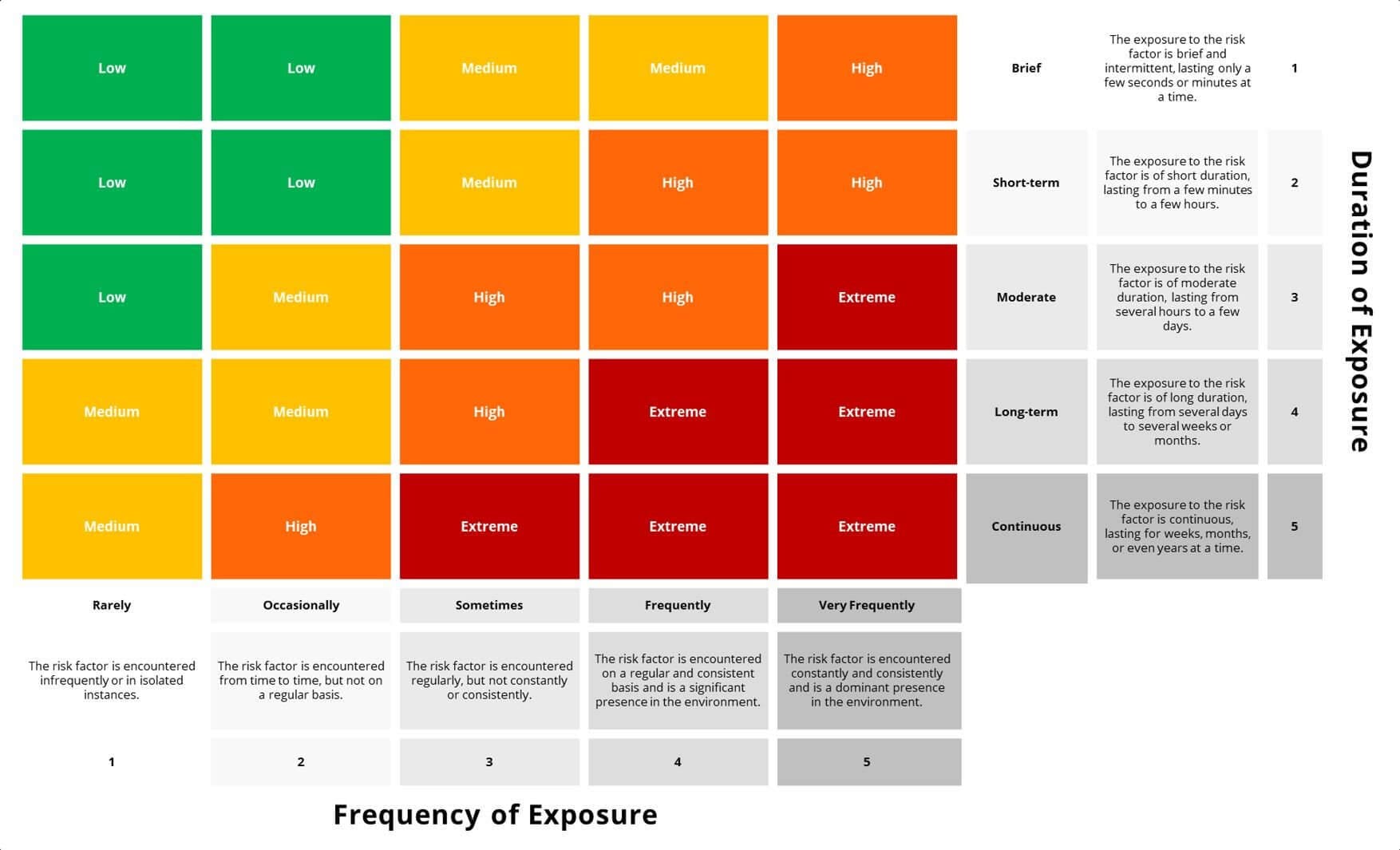
Jamie’s post attracted a rich, healthy, and detailed debate, which WHS/HR practitioners might be interested in delving into here. Some of the key comments included:
- Is a 5×5 matrix too limited to adequately assess the complexities of psychosocial risks? Can it reflect safety critical work analysis?
- Do the current codes of practice provide clear enough pathways to determine acute and cumulative risk of harm among different populations of workers?
- How can we meaningfully consider the subjectivity and inter-subjectivity of psychological health and safety claims?
Also on Jamie’s post, Antony Malmo (Allos Australia) shared an interesting extract from the September 2016 Nordic Journal of Working Life Studies, which included quotes such as:
- It’s hard to solve “once and for all”, because “psychosocial risks are embedded in all social relations; their dynamic character requires continuing solutions, thus entailing perpetual uncertainty.”
- “Research in psychosocial risks provides important knowledge, but compared with expert knowledge of physical risks, it is the subjective experience of the individuals and groups of employees and managers that determines the range and effectiveness of feasible actions.”
- “Workable solutions depend on [the] involvement of many stakeholders at the same time.”
[Tools] Psychosocial risk assessment surveys
- One tool mentioned in the LinkedIn discussion was People at Work’s Australian psychosocial risk assessment survey, which assesses a number of the most common psychosocial hazards and factors. The survey is part of a five-step process you can use to identify, assess, and control risks to psychological health at work.
People at Work is funded by the Queensland Government, WorkSafe Victoria, NSW Government, WorkSafe ACT, NT WorkSafe, Safe Work Australia, SafeWork SA, WorkSafe [WA], WorkCover Tasmania, and Comcare.
- Another tool was the international Copenhagen Psychosocial Questionnaire – COPSOQ III – designed for the assessment and improvement of psychosocial conditions in workplaces and for research purposes. Developed in 2000 by T.S. Kristensen and V.Borg, the third version was accepted in 2019.
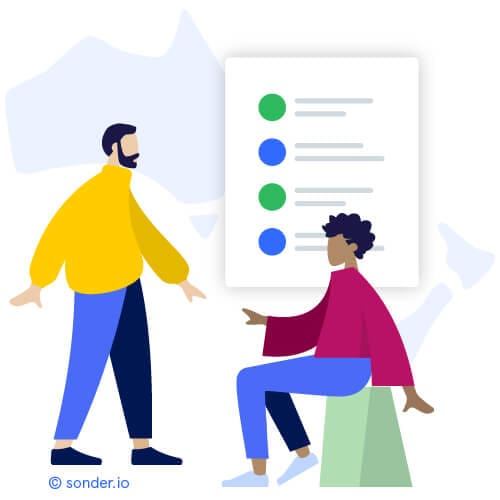
[Webinar] Managing psychosocial risk in the workplace
If you missed our previous mention of this webinar, it’s still one of the best public discussions on this topic. Targeted at mature WHS/HR audiences rather than beginners, it brings together a collection of great expertise from the following speakers:
- David Burroughs, Principal Psychologist, Australian Psychological Services, and Chief Mental
- Health Officer (CMHO) for Westpac Group;
- Jane Bourke, Director – Safety, Health and Wellbeing, Woolworths;
- Steve Bell, Managing Partner, EIRS at Herbert Smith Freehills; and
- Aaron Neilson CEO, The Safe Step and The Next Step.
Actions for organisational leaders
- Download our must-read guide to ISO 45003 here.
- Check your WHS/HR practitioners have read the full ISO 45003 document (currently available for free here). It may also be helpful for them to complete the 90-minute Foundations Course offered here, complete the self-audit here, and/or try the government-endorsed psychosocial risk assessment survey here.
- Be proactive with your support and consider introducing senior leadership KPBs, because as ISO 45003 states, “The success of psychosocial risk management depends on commitment from all levels and functions of the organisation, especially from top management.”
- Embrace small steps. “Start where you are at. Think about what you’d like to be different… Don’t delay starting to address psychological health and safety because you don’t have the ability to do it all. Just find something… There [are] lots of ways to start, but start”, says Mary Ann Baynton, who was instrumental in crafting The National Standard of Canada for Psychological Health and Safety in the Workplace (2013).
Want to learn more?
For more information about how Sonder can help you rethink your student and/or employee support, we invite you to contact us.
Disclaimer
This blog post covers legal and technical issues in a general way. (Parts of this post were prepared in conjunction with McCullough Robertson Lawyers.) It is not designed to express opinions on specific cases. The post is intended for information purposes only and should not be regarded as legal advice. Further advice should be obtained before taking action on any issue dealt with in this post.
About Sonder
Sonder is a technology company that helps organisations improve the wellbeing of their people so they perform at their best. Our mobile app provides immediate, 24/7 support from a team of safety, medical, and mental health professionals – plus onsite help for time-sensitive scenarios. Accredited by the Australian Council on Healthcare Standards (ACHS), our platform gives leaders the insights they need to act on tomorrow’s wellbeing challenges today.



